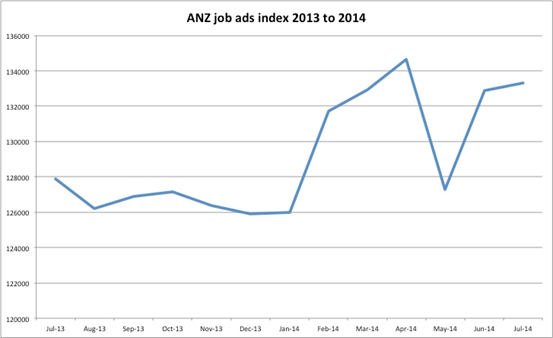Abbott is right to follow Gillard's jobs plan
In 2012 when the Gillard government approved the first ever ‘enterprise migration agreement’, the then-AWU boss Paul Howes hit the roof.
He called the scheme, which would have imported 1700 workers for Gina Rinehart’s Roy Hill project, “a massive kick in the guts for those 130,000 manufacturing workers who have lost their jobs since 2008”.
Actually, it was nothing of the kind. Howes and other union leaders were, even then, becoming increasingly aware that city-based workers do not simply hop onto a plane for the Pilbara when they’re retrenched.
As the immigration minister at the time, Chris Bowen, pointed out: “The Pilbara’s a great place, but it’s not for everybody.”
It’s something that city-based voters are struggling to understand as well -- something the Abbott government is going to have to do a much better job of explaining.
The prevailing attitude to imported labour, including continuing high levels of permanent migration, is that such workers are ‘stealing our jobs’ rather than helping to unlock economic potential.
In the current panic over the highest unemployment rate for 12 years, for instance, how many people have noticed that the ANZ job ads index is still at a relatively high level by historic standards?
In the two charts below, the first shows clearly where job ads have collapsed -- including the Keating recession, the dotcom bust and the Lehman Bros phase of the GFC. However in the past year (see second chart), there has been some recovery to around 133,000 job ads.


Compare today’s 133,000 job ads with the years 1996 to 2003 -- the period of relative stability before the massive increase in demand for labour during the hottest part of the mining boom -- and it’s clear that unmet demand for labour is higher now.
Even correcting for population growth, the 1996 and 2003 figures of around 90,000 would today equate to figures of around 115,000 and 107,000 job ads respectively.
Against this backdrop, the Abbott government has decided to take Labor’s plan to import workers for remote projects a step further.
Labor’s enterprise migration agreements were complemented by the ‘regional migration agreements’. The first tied a worker’s visa to a project, such as Roy Hill, and the second tied the job to a region, such as the Pilbara.
However, ACCI’s director of employment, education and training, Jenny Lambert, argues that the union dummy-spit in 2012 “froze” the rolling out of EMAs and RMAs.
The Abbott approach to unfreezing them is to create “designated area migration agreements” which tie workers to regions -- but unlike Labor’s scheme, allows for a lowering of English-language proficiency and other skills benchmarks.
That is likely to be a bridge too far for the unions and the voting public. We shall see.
However the essence of Labor’s RMAs, and the new DAMAs, is sound policy.
Both Labor and Coalition governments have tried to coax workers from metropolitan areas to take jobs in regional and remote areas and both have failed. The current government offers up to $6000 for a long-term jobless worker to take up a position in regional Australia.
By flying in workers from abroad under DAMAs, the jobs will be filled, and nobody will be ‘stealing our jobs’ -- they’ll be taking jobs we won’t fill ourselves.
Most importantly they, and their employers, will be paying our taxes.
As explained last week, the jobs crisis is widely mis-understood. We have a youth unemployment crisis, and metropolitan jobs crisis -- but at the same time, far from the city, there are labour/skills shortages.
As the economy transitions away from its reliance on resources projects, the need for regional workers to staff the growth in the ‘dining boom’ (including value-added food processing) and tourism sector (which Alan Kohler highlighted yesterday) will also require more workers in remote and regional areas.
It may take some time to explain, but Australia really does have both an unemployment crisis and a labour shortage.
If metropolitan Australians can’t learn to be more mobile, work visas that are tied to the regions will have to be part of the solution.
















